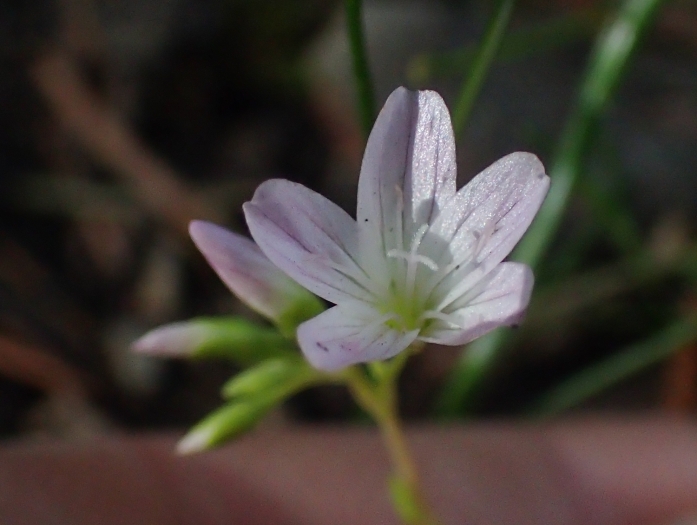Little-Leaf Miner’s Lettuce
(Montia parvifolia)
Little-Leaf Miner’s Lettuce (Montia parvifolia)
/
/

© bobkennedy
CC BY-SA 4.0























Estimated Native Range
Summary
Little-leaf miner’s lettuce is valued for its edible qualities, as both the leaves and flowers can be consumed raw in salads or cooked as greens. It is also appreciated for its ease of maintenance and ability to thrive in moist, shady conditions, making it suitable for woodland gardens, native plant gardens, or as a ground cover. In cultivation, it prefers consistently moist soil, partial to full shade, and cool temperatures. While generally free from serious pests and diseases, it can be prone to slugs in very wet conditions. This plant is not known for being invasive and is considered a beneficial addition to naturalized areas.CC BY-SA 4.0
Plant Description
- Plant Type: Herb
- Height: 0.3-1 feet
- Width: 0.5-1 feet
- Growth Rate: Moderate
- Flower Color: Pink, White
- Flowering Season: Spring, Summer
- Leaf Retention: Deciduous
Growth Requirements
- Sun: Part Shade
- Water: Medium
- Drainage: Medium
Common Uses
Bird Garden, Butterfly Garden, Edible*Disclaimer: Easyscape's listed plant edibility is for informational use. Always verify the safety and proper identification of any plant before consumption., Low Maintenance
Natural Habitat
Moist, shaded forest floors and stream banks in mountainous regions
Other Names
Common Names: Candy Flower, Small-Leaved Blinks, Small-Leaved Montia, Little-Leaved Candyflower, Little-Leaved Montia, Small-Leaved Miner’s-Lettuce
Scientific Names: , Montia parvifolia, Claytonia filicaulis, Claytonia filicaulis, Claytonia flagellaris, Claytonia parvifolia, Claytonia parvifolia, Claytonia parvifolia, Claytonia parvifolia subsp. flagellaris, Claytonia parvifolia var. adsurgens
GBIF Accepted Name: